#westrays
Explore tagged Tumblr posts
Text


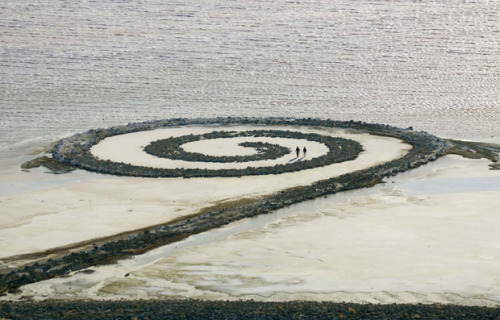

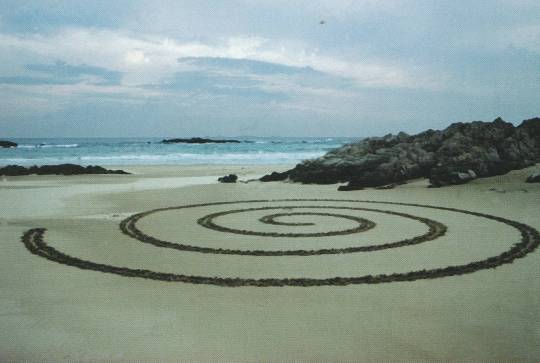

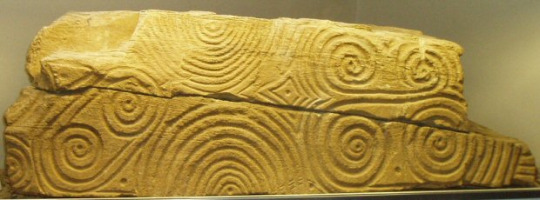

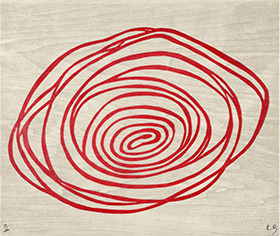
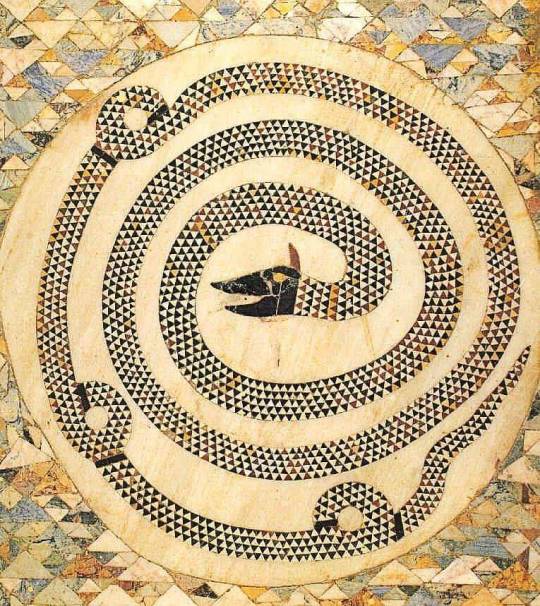

Spirals in art
Fern Ammonite - Liz McGowan (1997) | Red and White Shell - Georgia O'Keeffe (1938) | Spiral Jetty - Robert Smithson (1970) | Snow labyrinth - apulkkan on Flickr | Sculpting the Land: Artistic Interventions with the Landscape - Strijdom van der Merwe (2005) | Spiral detail from The Lindisfarne Gospels (715 - 720) | The Westray Stone, Neolithic era stone carving found in Pierowall Quarry, Orkney, Scotland | Untitled - Andy Goldsworthy | Untitled, no 2 of 12, from series Spirals - Louise Bourgeois, 2006 | 12th century snake mosaic, Church of Saint Adriano di San Demetrio Corone in Calabria, Italy | Snow Drawings - Sonja Hinrichsen (2014) |
#thinking thoughts#art#spirals#andy goldsworthy#louise bourgeois#lindisfarne gospels#georgia o'keeffe#robert smithson#sonja hinrichsen#westray stone#i kind of want a spiral tattoo...
544 notes
·
View notes
Text



The Orkney Venus, or Westray Wife, is a small figurine dating from the Neolithic period found on Westray in the Orkney Islands. In real life she is a tiny female figure, sculpted from sandstone and only a couple of inches high. Historians are unsure of her meaning, but she has been compared to other 'Venus' figurines found throughout Europe.
This tiny pendant is a faithful replica of the figurine, complete with tiny carved detailing. It is handmade from recycled solid silver, and is lightweight and comfortable for everyday wear.
Order your own HERE
#silver#silver jewelry#silver jewellery#handmade jewelry#etsy#etsyseller#orkney#orkney venus#westray wife#scotland#celtic#pagan#silver clay#prehistoric#history
16 notes
·
View notes
Text

𝔅𝔬𝔫𝔣𝔦𝔯𝔢𝔰 𝔟𝔲𝔯𝔫𝔦𝔫𝔤 𝔟𝔯𝔦𝔤𝔥𝔱 𝔓𝔲𝔪𝔭𝔨𝔦𝔫 𝔣𝔞𝔠𝔢𝔰 𝔦𝔫 𝔱𝔥𝔢 𝔫𝔦𝔤𝔥𝔱 ℑ 𝔯𝔢𝔪𝔢𝔪𝔟𝔢𝔯 ℌ𝔞𝔩𝔩𝔬𝔴𝔢𝔢𝔫
Have you ever been to a party and there just wasn't anyone there to help you? You're alone and maybe had a few too many. Maybe you need someone to trade shoes with cause yours are costume only and not functioning. All of that is usually what Cade gets up to during Halloween events. This year is no different!
He's dressing up a crooner type. The old school microphone as a prop and a black and white suit, pictured above (although he has no idea that the look is stolen from a comic-go figure.) There's even a fake cigar in his hand. "Go with someone? Oh. Was I supposed to bring someone?" He's being diplomatic. Asking someone would make him incredibly nervous. Despite this, he's at all of the events leading up to the big party that evening.
3 notes
·
View notes
Text

Puffin on westray, Orkney islands
Fratercula arctica
3 notes
·
View notes
Text

Doing some last edits on the bonus short story for The Hummingbird Killer before it's time to format it.
(To get your hands on this story, pre-order THK and fill in the Google form on my website!)
12 notes
·
View notes
Photo



“I mean, Sunny, it’s a port city that has struggled to reinvent itself in the day of increased air cargo and containerazation which led to the layoffs of dock workers, regeneration attempts attracting affluent tourism while leaving behind the very working-class people that made the music and art scene there possible.”
“So, fine?”
“Yeah, fine.”
#Doc watches Unforgotten#Unforgotten S1 E2#full disclosure I've never been to liverpool and 90% of this is based on#a) the little I know#and B) talking to a neat guy who owned the little tiny 'coffee shop'#on Westray in the Orkneys that was DEFINITELY just a room off his house#and he DEFINITELY made my 'americano' in a nescafe machine#and i loved him#He was from Manchester and we talked about Manchester and Liverpool#and how I should never go there it's ruined now but I would like#Wales being a country girl have I been to Wales oh I think you'd like Wales#Can you ride a horse? Do you own a gun?#Sir I can hogtie a goat I am here to fulfill your cowgirl American fantasies#He was incredible and we talked for like an hour and a half because it was fucking freezing and I was waiting for my ferry#He loved American sportscars and I laughed and told him I love British sportscars#Full credit no one laughs like an Englishman when you refer to an English car as#'the most beautiful piece of shit taking up space in the garage'#Anyway he gave me my second 'americano' free and I bought a knit puffin for Jewlet
11 notes
·
View notes
Text

The Westray Wife (also known as the Orkney Venus) is a small Neolithic figurine, 4 centimetres (1.6 in) in height, carved from sandstone. It was discovered during an Historic Scotland dig at the Links of Noltland, on Westray, Orkney, Scotland, in the summer of 2009. It was the first Neolithic carving of a human form to have been found in Scotland, and to date it is the earliest depiction of a face found in the United Kingdom.
~ Wiki
#The Westray Wife#Orkney Venus#Neolithic figurine#sandstone#Scotland#Links of Noltland#Westray#Orkney#Ancient Ways#SymbolSpeak#Goddess#Ancestors Alive!
1 note
·
View note
Text
Testing pilot trial now underway for Orkney cancer gene link
Community testing is now underway in the Orkney outer isle of Westray for a gene variant that causes a higher risk of developing breast and ovarian cancer.
youtube
The variant in the gene BRCA1 was linked to a historic origin in Westray by leading geneticists from the Universities of Aberdeen and Edinburgh, who published their findings in the European Journal of Human Genetics in March.
Now, a small pilot trial organised by NHS Grampian and funded by the Westray Development Trust is offering testing for the variant to anyone living in Westray with a Westray-born grandparent. Local cancer charities Friends of ANCHOR and Clan cancer support are supporting the programme set up in partnership with the Westray community and GP practice. NorthLink Ferries have provided additional support by transporting the test kits to Orkney free of charge.
Westray residents with a Westray-born grandparent who wish to be tested are encouraged to pick up a self-test saliva kit from today (Monday, 3 July), either from the Westray GP Practice or from the Westray Development Trust office.
Information about the test and what it could mean is available in the test kit and online. Residents who wish to discuss their test decision can book a chat with a genetic counsellor from the Aberdeen team through the Orkney BRCA1 helpline on 01224 553940, or by emailing [email protected]
Completed saliva kits should be returned to the practice, who will send them onto the Aberdeen genetics laboratory to be tested for the BRCA1 variant. GPs will not be able to assist with gene testing and any questions about this research and next steps should be directed to the helpline.
Results will be posted within five weeks of the sample being received by the lab and anyone found to have the variant will be offered a rapid-access genetic counselling video call or telephone appointment to access ongoing specialist care, support and testing of relatives resident in Scotland. The team will signpost close relatives living further afield to local testing.
If the pilot is successful the long-term aim is to offer the test to everyone in Scotland with a Westray-born grandparent, then to assess which more distant relatives should be offered a test. Currently in Scotland the test is only available to Westray residents, those who know of a direct family connection to the BRCA1 gene, or have a significant history of ovarian or breast cancer in their family.
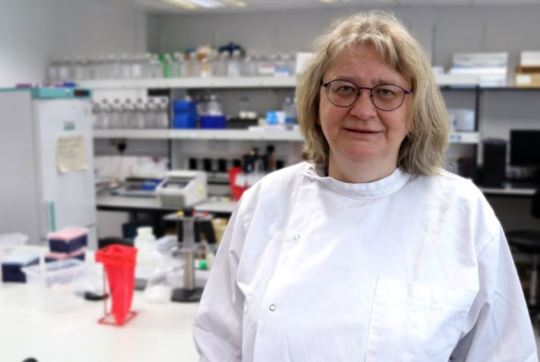
Zosia Miedzybrodzka, Professor of Medical Genetics at the University of Aberdeen and Director of the NHS North of Scotland Genetic Service, led the research that established the Westray link to the BRCA1 variant with Professor Jim Wilson from the University of Edinburgh.
Welcoming the launch of the pilot trial, Professor Miedzybrodzka said: “The NHS Grampian genetics clinic and lab teams are delighted to offer this pioneering new service to Westray residents which will improve care and save lives. I am grateful to every single person that has made this pilot happen. We are setting up a system that will hopefully extend to the rest of Orkney and Scotland as soon as funding allows.”
Gina Rendall, Operations Manager at the Westray Development Trust, is among those planning to take part in the testing pilot. She said: “When the link to the variant was discovered the news had a deep impact on our small community and as a Trust we are delighted to offer the funding which means that members of our community can be tested and supported by Zosia’s team. I’m really proud to be from Westray and of the Trust’s pledge to support the pilot.”
Professor Nick Fluck, Medical Director for NHS Grampian commented: “Our genetic counselling team has done an outstanding job of fielding more than 1,000 calls and emails about this important new discovery and the roll-out of further testing will mean our researchers will continue to contribute to world-leading knowledge in this field. We are very pleased to be working alongside the University of Aberdeen and partners on this piece of work.”
Meghan McEwen, NHS Orkney Board Chair, said: “The pioneering work of the Grampian genetics team has done an incredible amount of work to ensure women with a Westray-born grandparent are able to access genetic counselling and their own risk factors around this discovery.
“The primary care team in Westray and NHS Orkney has done a wonderful job in providing support and information as part of this effort and I am extremely proud of our services and our community for responding so quickly.”
Dr Kate Done from the Westray GP Practice added: "The team at Westray GP Surgery are very excited to be able to support this project. It's a great opportunity to help prevent these serious diseases amongst our patients, and hopefully the wider population in times to come."
Kay Johnston, Clan Cancer Support’s head of cancer support services said: “Clan has been delivering a dedicated drop-in service in Westray since April, following the publication of research concerning the BRCA1 gene variant, to ensure we could provide confidential support to the community.
“We welcome this testing pilot trial for the gene variant and will continue to support any individuals on Westray who are worried about their own results or a loved one who has been affected.”
A series of FAQs and short video explainers which are available on NHS Grampian’s website: www.nhsgrampian.org/BRCA1.
0 notes
Photo
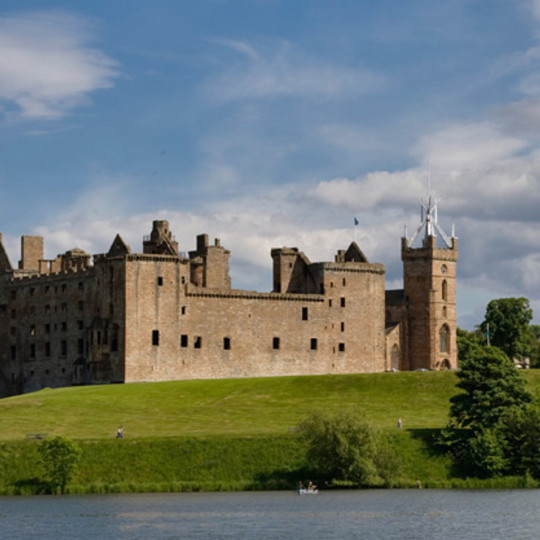
A Gallery of Standing Stones, Cairns, and Castles of Scotland
Scotland has a rich history dating back to seasonal settlements around c. 10,500 BCE and permanent residences by c. 7000 BCE. Neolithic ceremonial sites such as the Ness of Brodgar were established by c. 3500 BCE, and communities like Skara Brae by at least c. 3100 BCE. The people abandoned these sites but continued to develop others elsewhere.
Skara Brae was a residential community of hunter-gatherers as were older sites, such as the Knap of Howar on Papa Westray, Orkney, dated to c. 3700-3500 BCE. The people of this region raised ceremonial sites including the Ness of Brodgar, Ring of Brodgar, and the Standing Stones of Stenness, thought to have served as liminal places between the earthly plane and others. Further south, Clava Cairns, a Bronze Age site outside of Inverness, dated to c. 2500 BCE, seems to have been used for the same, or similar, purposes. Clava Cairns, also known as the Balnuaran of Clava, was carefully constructed to align with astronomical points and was also used for the burial of important members of the community.
By the 2nd millennium BCE, during the Early Iron Age, Castle Rock in modern-day Edinburgh was inhabited, then was used as a hillfort, and in the 11th century, it became the site of Edinburgh Castle. The site of Stirling Castle, dated to the 12th century, does not have as long a history but is thought to have been inhabited by the Picts in the 7th century and been fortified by the 9th.
These are only a few of the fascinating sites throughout Scotland. The following gallery presents an assortment of the abbeys, standing stones, cairns, and castles of the region, all with long histories. There are many more sites to see besides those featured below and readers are encouraged to go and hear the stories they have to tell.
Continue reading...
25 notes
·
View notes
Text

Good Morning from Scotland 🏴
Breaking dawn looking out from Papa Westray, Orkney Islands.
📸papayranger/Jonathan Ford on Instagram
64 notes
·
View notes
Text
MISS CONENGINALITY - BRITTEN-NORMAN BN-2 ISLANDER
Remember when the UK made the best airplanes in the world? Me neither, I wouldn't be born for several decades. Anyway, Britten-Norman Islander.
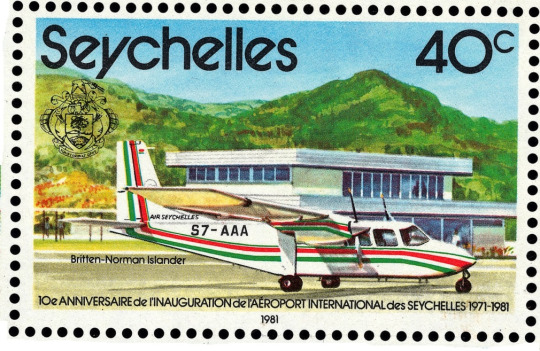
image: Air Seychelles
The last holdout of the UK making really fantastic planes, the Islander is a popular regional airliner and utility plane used for things like skydiving and air ambulance service as well as the typical passenger and cargo flights. At first glance she's a pretty regular high-wing twin-prop that seats 10, but look closer and you may begin to notice things.
Upfront, I love the Islander. (Obviously, or I wouldn't be making this post about it.) My love for this plane isn't solely organically developed, because it does also hold a special nostalgic place in my heart for being the first propeller plane I ever flew on, with Cape Air in 2015 from San Juan to Vieques. (As Vieques Air Link also operates these, they're a common sight down there! The name of the model is, as it were, very apt.)

image: Cape Air This is the exact plane that I flew on!
Now, from this image you can already see that the Islander has some lovely features, from those absolute bollards coming out of the engines to the wildly pointy nose (not the first plane I've discussed that's giving DUKW), but despite looking goofier the closer you look at it this thing is an incredibly beloved and reliable plane.

image: Bonham's Behold, a Britten-Norman BN-2 Islander.
Also of note is the Islander's extremely low wing aspect ratio, and I've always thought the tailplane looked a little too small for the tailfin from the side despite looking giant from below. The general ratios on this plane, in every single possible place, look just ever-so-slightly off, and I love it.

image: Mark Harkin I mean. She's just blocks.
Still, this is an incredibly well-designed plane. It's cheap, rugged, utilitarian, reliable, versatile, and remarkably stable in flight, which is why over 1,000 have been built to date. (Personally, I didn't find the cabin to be the roomiest even for an aircraft of its size, but I remember it being a comfortable enough flight.) The Islander is still in production today despite first flying in the mid-1960s, which is something few models can claim. You can use an Islander for basically anything, with their big doors and STOL capability, and it's even used for the world's shortest flight and an entry on my bucket list, the two-minute hop between Westray and Papa Westray operated by Loganair.

image: National Museum of Flight Scotland Despite being shown outside in this photograph, she currently lives in the civil aviation hangar, a top pick on my list of places I would like to secretly live in for the rest of my life.
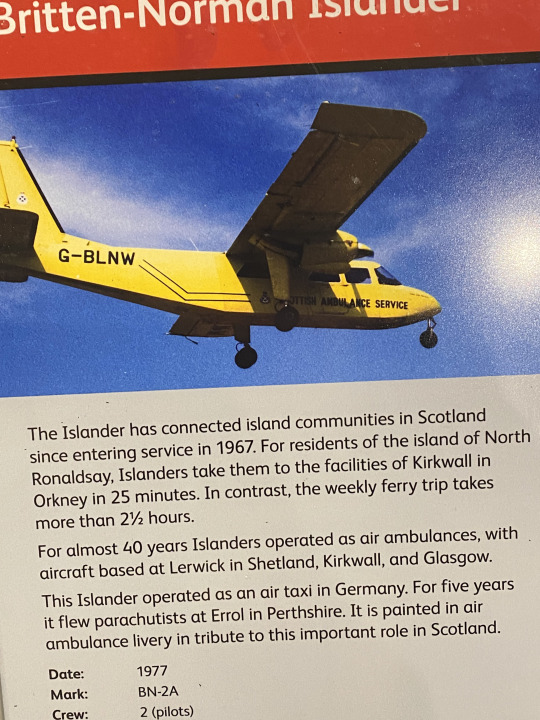
image: own work, taken inside the civil aviation hangar at the National Museum of Flight, Scotland
In late October I visited the National Museum of Flight, Scotland. It was an incredible experience and I will be discussing it across several future posts due to the sheer variety of preserved airframes they had, including everything from a Puss Moth to a jump jet. (The general museum will probably get a dedicated post as well in the future - suffice to say I had a fantastic time.) Among their preserved aircraft is a BN-2 Islander registered G-BELF, painted a vivid highlighter-yellow which pictures really can't do justice in homage to Scottish air ambulances which serve isolated island communities in the North Sea.
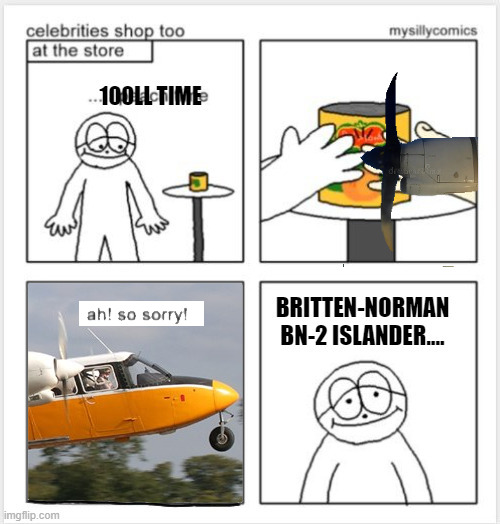
I was absolutely delighted to see her in person. Seven years after I last stepped foot in an Islander, it felt like something of a reunion to just stand next to a mothballed airframe and admire how...really strange-looking these planes actually are.
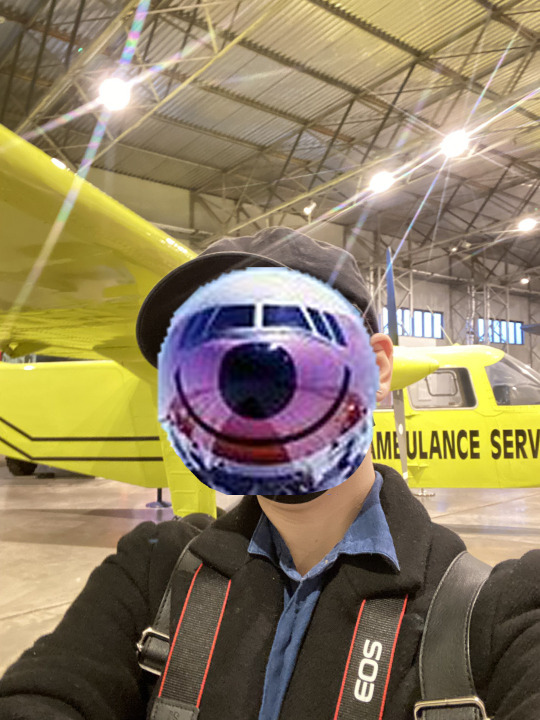
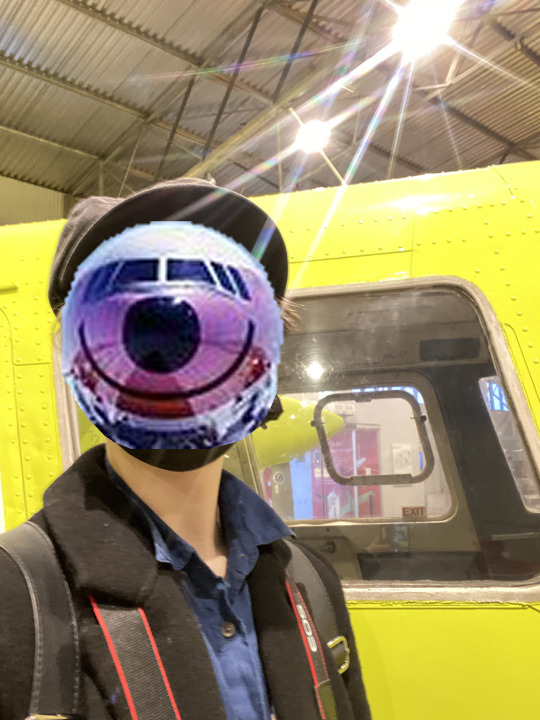
own work, obvi
I mean, for one thing, they're a lot shorter than you might think they should be. Pictured for scale is a 165cm/5'5" tall human with a PSA Lockheed TriStar for a face. I couldn't get that good of an angle on it, but my head is only a few inches short of the wing, and you can see that I'm well taller than the cabin windows. An entire Islander is shorter than a single Concorde tire.

Plus, that wing chord is so long I could use her as a shelter in the rain.
So, yeah. That's the story of how I met my favorite commuter airliner. I hope to fly on one again someday, but for the moment I'll have to be content with looking at pictures of these weird-looking planes that can fool you for a moment into thinking they're regular.

Also they tried to put propeller shrouds on one once.
36 notes
·
View notes
Photo


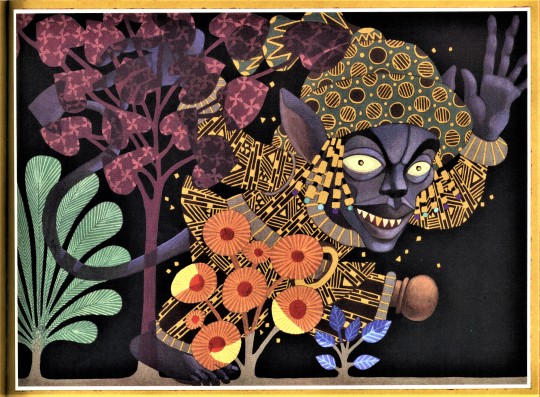

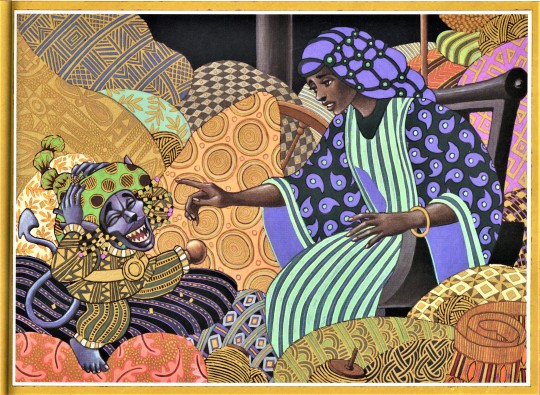


Staff Pick of the Week
My name is Elizabeth Voorhorst, and I am a new writing intern for Special Collections this semester. It is a pleasure to share this space, as I am excited to delve into the vast sea of books that Special Collections makes a home for.
I am an English major, with a focus on creative writing. Because of this, my time spent in Special Collections will be focused predominantly on fairy tales and folklore, perhaps dipping into mythology when curiosity and inspiration strikes hardest.
For this week, I wanted to focus on black creators and their works for Black History Month. Because my pride and passion is folklore and fairy tales, I thought it would be fun to take a look at what we have in our collection and share it with you!
Retellings are always enjoyable, as you get to see the way writers recreate and offer their own flare and heritage to the story. One such story is The Girl Who Spun Gold, a retelling of the German classic fairy tale Rumpelstiltskin. This retelling was written by Virginia Hamilton (1932-2002) and illustrated by Leo Dillon (1933-2012) and Diane Dillon (1933- ).The book was published 1n 2000 by Blue Sky Press, an imprint of Scholastic Inc.
The story is about a West Indian girl named Quashiba, whose mother lies to Big King that she is able to spin golden thread. The King takes Quashiba as his queen, expecting her to fill whole rooms with golden fabrics and finery, which of course she would be unable to do. However, she meets a creature who offers to help, but demands that in three days she must guess his name correctly or be bound to him forever.
Quashiba is now able to fulfill the King’s continuous demands, but is unable to guess the name of her helper, until the King reveals to her that he ran across a strange creature in the woods who was dancing and singing a song that included his name, Lit’mahn Bittyun. So, on the final night, after the room is filled with fabrics and wondrous goods, Quashiba plays dumb for the first two guesses, and on the last guess she gives him his full name and he explodes into a confetti of golden specks. The King repents his greed, but only after three years and a day does Quashiba reconcile with him.
The absolutely stunning illustrations for The Girl Who Spun Gold were made using a four-color process with gold as a fifth color. The Dillons comment on the painting process, stating:
Knowing the difficulty of painting with metallic paint as well as the difficulty of reproducing gold, we still chose to use it, for the story itself revolved around the concept of gold. The art was done with acrylic paint on acetate, over-painted with gold paint. The gold borders were created using gold leaf.
The book was printed on one-hundred-pound Nymolla Matte paper, and each illustration was spot-varnished. Color separations were made by Digicon Imaging Inc., Buffalo, New York, and the book was printed and bound by Tien Wah Press, Singapore, with production supervision by Angela Biola and Alison Forner. Along with Leo & Diane Dillon, the book was also designed with help from Kathleen Westray.
View more work by African American artists.
View more posts concerning African Americans.
View more Staff Picks.
- Elizabeth V., Special Collections Undergraduate Writing Intern
#Staff Pick of the Week#black history month#virginia hamilton#fairy tales#Leo Dillon#Diane Dillon#the girl who spun gold#rumplestiltskin#folk tale#black writers#African American writers#African American artists#scholastic#black artists#Blue Sky Press#children's books#Historical Curriculum Collection#illustrated books#Elizabeth V.
224 notes
·
View notes
Text
( @wrenhawthxrne -- a grocery store far away from the Hawthorne estate late, in the middle of the night )
The spotlight has never been any good to him. A secret, miniature addiction has long evolved into a full-blown one, and when Rowan enters the grocery store to get some desperately needed water, his pupils are so blown that he flinches when he comes in contact with light. It takes him half an hour to finally make it to the water, and when he does get there, the effects of the coke have slowly stopped circulating at it's high, and push him down to the low.
Which is why when he stumbles into Wren in aisle four, he thinks it's a hallucination at first, apologizes and turns to keep on walking. But he stops right in his tracks, then. Wipes some residue powder of his nose. Fixes the collar of his shirt beneath his cashmere pullover, and pushes it back into his pants correctly. When Rowan turns back around, the only immediate giveaway for his state are his eyes, and his slightly reddish nose. The rest of him is polished and pristine, like it should be. Like it's expected from him.
Rowan doesn't say a word. He almost expects Wren to bolt. He looks old -- well, older, but so does he look older himself. There's a hint of fear in his eyes -- fear of Wren's reaction, about him seeing him like this, lost in the outermost fringes of existence. High as fucking balls. Wren is the person he'd come to, panicked about his addiction -- Wren is the only one that knows. Truly knows why, and how, and how often.
Though not anymore.
"What the fuck are you doing in fucking Westray."

7 notes
·
View notes
Text

𝕿𝖍𝖊𝖗𝖊'𝖘 𝖘𝖜𝖊𝖊𝖕𝖎𝖓𝖌 𝖜𝖎𝖓𝖉𝖘, 𝖆 𝖐𝖓𝖔𝖈𝖐 𝖆𝖙 𝖞𝖔𝖚𝖗 𝖉𝖔𝖔𝖗. 𝕵𝖚𝖘𝖙 𝖇𝖊𝖋𝖔𝖗𝖊 𝕾𝖆𝖒𝖆𝖍𝖆𝖎𝖓 𝖙𝖗𝖚𝖑𝖞 𝖊𝖓𝖉𝖘, 𝖜𝖍𝖊𝖓 𝖔𝖓𝖑𝖞 𝖙𝖍𝖊 𝖉𝖆𝖗𝖐𝖓𝖊𝖘𝖘 𝖘𝖙𝖎𝖑𝖑 𝖑𝖎𝖓𝖌𝖊𝖗𝖘
On your doorstep, outside your window, wherever it is most convenient- is a small package. It holds a few different kinds of candy. Does Cade know your favorite? Unlikely, but he's thrown in all different types. He's given some of those who he does know well- some books, some crystals, some candles, some cookies or cupcakes.
Attached is a note:
𝓗𝓪𝓹𝓹𝔂 𝓗𝓪𝓵𝓵𝓸𝔀𝓮𝓮𝓷! 𝓕𝓻𝓸𝓶 𝓒𝓪𝓭𝓮 𝓢𝓸𝓵𝓸𝓶𝓪𝓷
#also it's a little fun way for me to say happy halloween to all of you because you're wonderful people! <3#~interactions:open~#holidays in westray.
1 note
·
View note
Text

DOWN, DOWN, DOWN THE ROAD...
...you'll find the city of Westray. Snug in between mountains, a forest and the sea, it is the perfect place for a nice, calm vacation. As long as you don't question the noises coming out of the forest, or the lights at night, in the mountains, or the frequent movement underwater.
WITCHESROADHQ is a 21+, mature, multi-muse, small-town and supernatural roleplay group, that focuses on character development and features fun events.
Accepting on a rolling basis!
MOBILE NAVIGATION | APPLY | MASTERLIST| SPECIES | PLOT
4 notes
·
View notes
Text
𝟮𝟭 𝗳𝗮𝗰𝘁𝘀 𝗮𝗯𝗼𝘂𝘁 𝗦𝗰𝗼𝘁𝗹𝗮𝗻𝗱 𝘆𝗼𝘂 𝗱𝗶𝗱𝗻'𝘁 𝗸𝗻𝗼𝘄:
1. Scotland has over 790 islands, but only about 130 are inhabited. The largest inhabited island is Lewis and Harris.
2. Edinburgh was the first city in the world to have its own fire brigade, established in 1824.
3. Scotland's national animal is the unicorn, symbolizing purity, innocence, and power in Celtic mythology.
4. The shortest scheduled flight in the world is in Scotland. The flight between Westray and Papa Westray in the Orkney Islands lasts just around one minute.
5. Scotland is home to the oldest tree in Europe: A twisted yew tree in Fortingall that is estimated to be between 3,000 and 9,000 years old.
6. Shetland has the highest density of otters in Europe, with around 1,000 otters living in the wild.
7. The raincoat was invented by Charles Macintosh, a Glaswegian, in 1824, revolutionizing outdoor wear with his waterproof fabric.
8. Scotland has its own legal system, separate from England and Wales, with its roots in Roman law and influenced by other legal traditions, including French law.
9. The Encyclopedia Britannica was first produced in Scotland in 1768, in Edinburgh, to be precise.
10. The world’s first color photograph was taken in Scotland: In 1861, James Clerk Maxwell presented a color photograph of a tartan ribbon.
11. Golf originated in Scotland, with the game being played on Musselburgh Links in 1672, which is recognized as the world’s oldest golf course.
12. Scotland’s national dish is haggis, a savory pudding containing sheep's heart, liver, and lungs, mixed with onions, oatmeal, suet, spices, and salt, encased in the animal's stomach.
13. The first official international football (soccer) match was played in Scotland between Scotland and England in 1872.
14. Scotland has its own currency: Scottish banks issue their own banknotes, which are legal currency throughout the UK, though they might be met with confusion outside Scotland.
15. Edinburgh was named the first UNESCO City of Literature in 2004, recognizing its strong literary heritage.
16. St. Andrew’s Day on November 30th is a national holiday in Scotland, celebrating Saint Andrew, the patron saint of Scotland.
17. The Old Course at St. Andrews is considered the "home of golf" and has been played on since the 15th century.
18. Skara Brae on Orkney is older than Stonehenge and the Great Pyramids, making it one of the oldest agricultural villages in the UK.
19. The largest secondhand bookshop in Scotland, Leakey’s Bookshop in Inverness, is housed in an old church and features a wood-burning stove in the center.
20. The Scots Pine is Scotland’s national tree, symbolic of its ancient Caledonian forests.
21. Scotland is famed for its "right to roam", where people can access most land and inland water for recreation, as long as they do so responsibly under the Scottish Outdoor Access Code.
14 notes
·
View notes